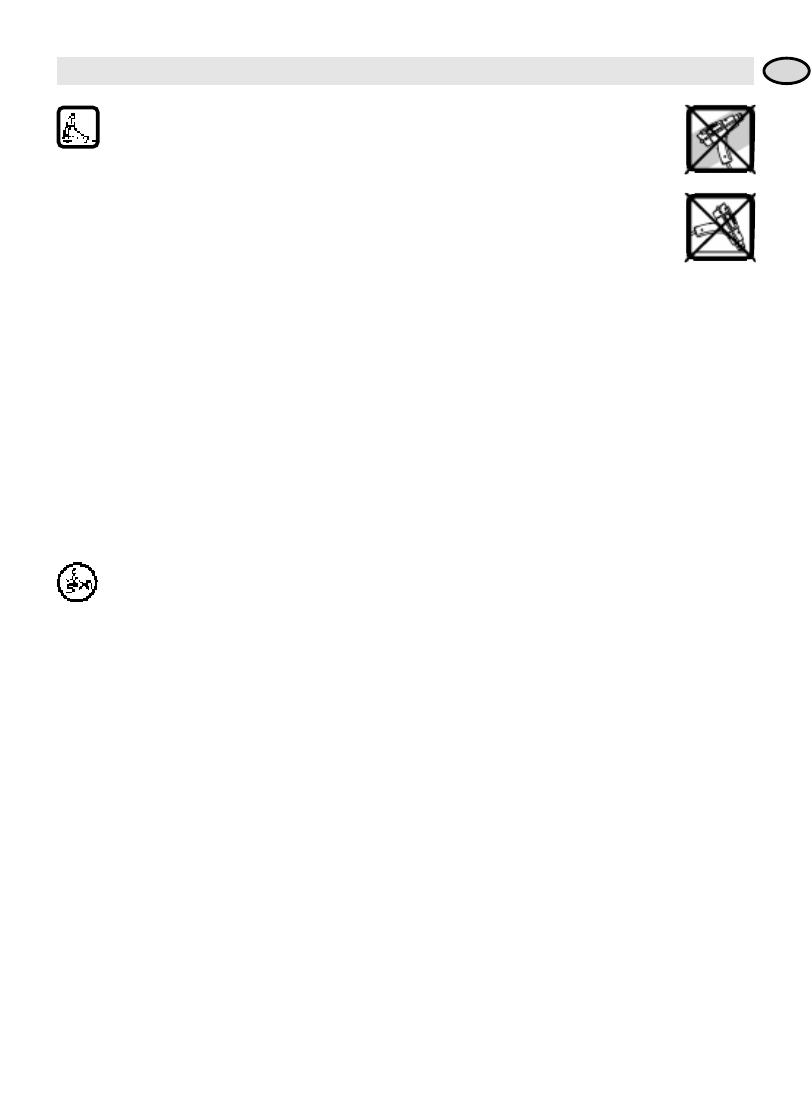
SAFETY INSTRUCTIONS
Operating requirements
• The tool must not be used lying flat nor permanently directed
downwards.
• Ensure that the air inlet openings and the adapter outlet are not
obstructed, as this can lead to excessive heat build-up and thus to
damage to the tool.
• After use put the tool on its stand and allow it to cool down com-
pletely before packing it away.
Application
• The tool must be used only for the applications indicated in the
instructions for use.
Paint stripping
• When removing paint care should be exercised, particularly if the paint contains lead
pigments. Buildings dating from before 1978 may well have been painted with lead-
containing paint which has subsequently been painted over. Before starting work, it is
important to determine whether the paint which you wish to remove contains lead.
This can be determined using a lead test kits or by a professional paint contractor.
• Lead and dust containing lead particles are extremely dangerous. Small
children and pregnant women are particularly endangered and should be kept away
from renovation work in which lead-based paints are being removed.
• When removing lead-containing paints you should ensure that the work space is shut
off from its surroundings. We recommend that a dust-mask should be worn. You
should not smoke, eat or drink in work spaces which may be contaminated by lead.
Do not burn off the paint. The hot air temperature should remain below 840 ºF.
Do not misuse the cord
• Do not carry the tool by the cord, and do not use the cord to pull the plug out of the
socket.
• Protect the cord from heat, oil and sharp edges.
• Do not wind the cord around the tool.
• Use only permitted and correspondingly marked extension cords.
• Take care of your tool. Follow the maintenance rules and the instructions for adapter
change.
• Check the plug and cord regularly; if they are damaged have them replaced by a reco-
gnized service center.
• Check the extension cords regularly and have damaged ones replaced by a electric
specialist.
Inspection after damage
• Before further use of the tool, slightly damaged parts should be carefully checked to
ensure that can fulfil their function correctly and in accordance with requirements.
Damaged tools must be repaired by an authorized service center. Never use a tool if
its switch will not switch on and off.
• Adapters must be fitted firmly and safely to the tool. Check: no hot air must flow to
the tool itself - the tool would be damaged.
• Keep the handles free of oil and grease.
Storage of heat guns
• Heat guns which are not in use should be stored in a dry enclosed place out of the
reach of children.
3
USA


















